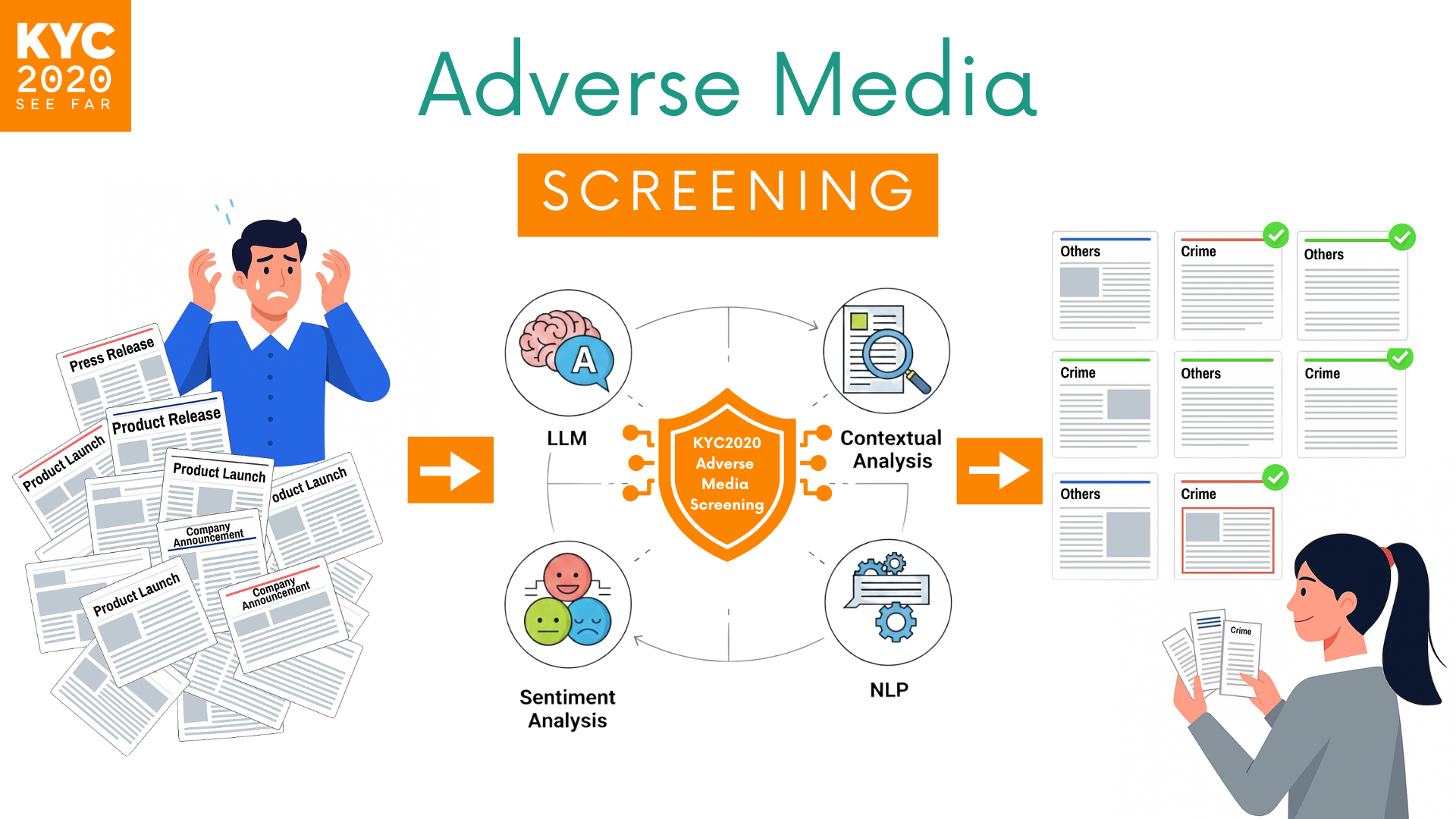Adverse media or negative news screening has long been one of the most challenging aspects of AML Screening. While essential for uncovering risks tied to individuals or entities, it often creates major inefficiencies: too many false positives clutter review and case management actions, and duplicate articles lead to increased manual work. These issues slow down onboarding, increase compliance costs, and frustrate analysts who need clear, actionable insights.
At KYC2020, we’ve been listening closely to our customers, and based on their feedback, we’ve introduced two key features to address these pain points:
1. Article Classification to Reduce False Positives
We developed and deployed our own LLM-based classification model to intelligently categorize adverse media articles into multiple groups:
- Crime Articles
- Press Releases
- Company Announcements
- Product Launches
- Others
This enhancement gives compliance teams more control over their results. Users can now configure DecisionIQ to:
- Retrieve results from only the categories they require, as per their risk-based approach.
- Automatically clear out categories that they consider irrelevant (e.g., product launches, press releases)
By filtering out non-risk-bearing content upfront, analysts spend far less time reviewing articles that shouldn’t have had hits in the first place directly reducing false positives and improving screening efficiency.
2. Automatic Duplicate Article Clearing
Another long-standing issue in adverse media screening is the flood of duplicate articles. The same news story, often republished across multiple outlets, creates unnecessary clutter and repetitive work. In fact, a customer recently shared an instance where 16 nearly identical articles about the same event were flagged by another provider, dramatically slowing their review process. Based on this feedback, we fast-tracked the development of a title similarity–based deduplication feature, powered by our in-house LLM model.
To address this, we’ve implemented automatic duplicate clearing based on title similarity scoring. Here’s how it works:
- When articles are retrieved, their titles are compared for similarity.
- If they exceed a configurable similarity threshold (1–100), they are automatically cleared as duplicates.
- Compliance teams can adjust the threshold to make the system stricter or more flexible based on their needs.
This means fewer repeated stories showing up in results, leading to quicker case management and review times.
The Backstory: Customer Feedback Driving Innovation
Both of these features came directly from the voices of our customers. Many expressed frustration at how adverse media tools often slowed them down more than they helped, forcing teams to waste valuable time sifting through irrelevant press releases or the same article republished five times.
We took that feedback seriously and designed these solutions within DecisionIQ to cut down on noise and deliver higher-quality, more relevant results. The outcome: reduced onboarding times, lower compliance costs, and a smoother workflow for compliance professionals.










